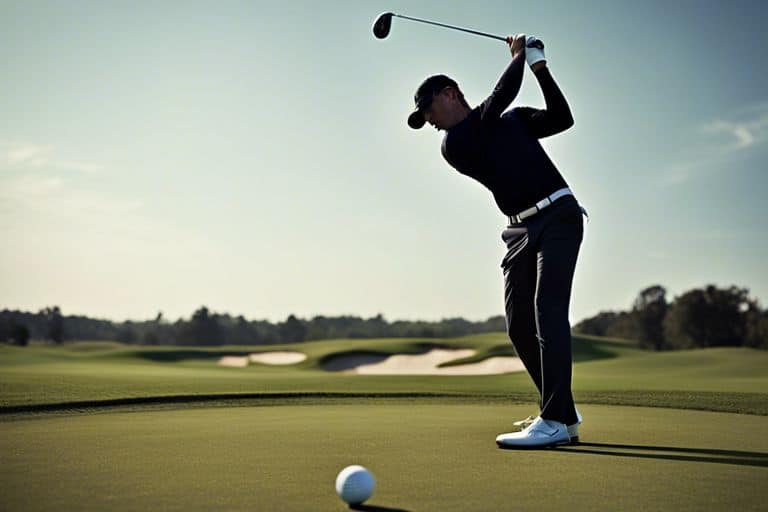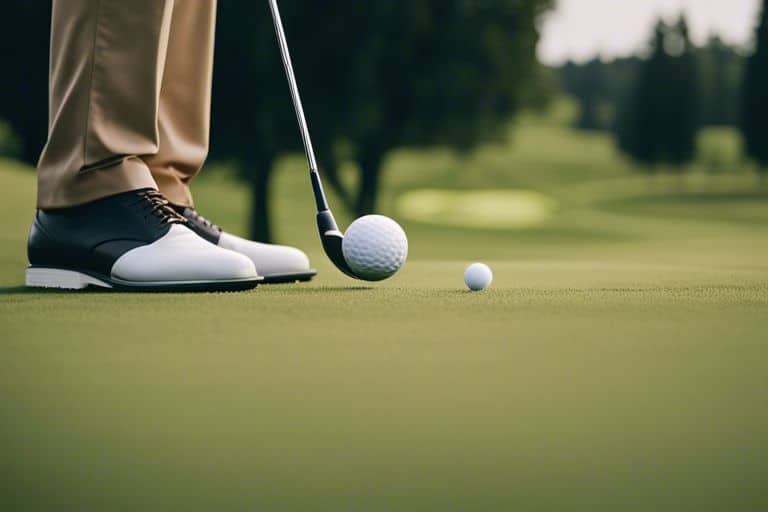How do you hit a "low slice" shot in golf?
Indubitably, hitting a “low slice” shot in golf can be a challenging and daunting task, but with the right technique and approach, it can be a valuable shot to have in your arsenal. When I find myself in a situation where I need to execute a “low slice” shot, I focus on positioning the ball slightly back in my stance and angling the clubface slightly open at address.
This allows me to produce a shot that flies low and curves gently to the right, providing me with the control and accuracy I need in certain situations on the course. Keep in mind that mastering this shot takes practice and patience, but once you’ve got it down, it can be a game-changer in your golf game.
Understanding the Low Slice Shot
To effectively hit a low slice shot in golf, it’s important to first understand the key factors involved in executing this type of shot. By mastering the techniques and principles behind the low slice shot, you can add a valuable shot to your golfing repertoire that can help you navigate challenging course conditions and improve your overall game.
Definition of a Golf Slice
A golf slice is a shot that curves from left to right (for a right-handed golfer) or from right to left (for a left-handed golfer). This type of shot is typically an unintentional result of poor swing mechanics, such as an open clubface at impact or an outside-to-inside swing path. The slice is a common issue for many golfers, and it can lead to loss of distance and accuracy on the course.
Characteristics of a Low Slice Shot
When hitting a low slice shot, the ball trajectory is low to the ground and curves from left to right (for a right-handed golfer). This type of shot can be advantageous in certain situations, such as when you need to control the trajectory of the ball to navigate around obstacles or adverse weather conditions. However, it’s important to note that the low slice shot can also be a dangerous weapon if not executed properly, as it can result in lost distance and accuracy if not controlled effectively.

The Mechanics of the Low Slice
Obviously, hitting a low slice in golf requires a deep understanding of the mechanics involved in producing the desired shot. It’s not just about the swing itself, but also about the stance, grip, and overall technique. Let’s break down the key elements that go into executing a successful low slice.
Golf Swing Technique for a Low Slice
When it comes to the golf swing technique for a low slice, I focus on creating a shallow angle of attack to the ball. This means that rather than hitting down on the ball, I approach it from a shallower angle, allowing the clubface to impart more side spin. Additionally, I make sure to keep my hands ahead of the clubhead at impact, which helps to produce a lower trajectory and a controlled side spin that results in the desired slice.
Adjusting Your Stance and Grip
Another crucial aspect of hitting a low slice is adjusting your stance and grip. When I’m looking to hit a low slice, I slightly open my stance and align my body to the right of the target. This helps to promote an outside-to-inside swing path, which is essential for producing a slice. As for the grip, I make sure to weaken it slightly by rotating my hands counter-clockwise on the grip. This adjustment helps me open the clubface at impact, further promoting the low slice trajectory I’m aiming for.

Strategy and Execution
Despite the low slice shot being a challenging maneuver, it can be an incredibly useful tool in the right circumstances. To execute this shot effectively, you need to consider the strategy behind when and where to use it, as well as the proper execution to achieve the desired result.
When to Use a Low Slice Shot
When you find yourself facing a low-hanging obstacle, such as tree branches or a strong headwind, a low slice shot can be the perfect solution. By mastering this shot, you can effectively navigate around these hazards and keep your ball in play. It can also be a helpful tool when you need to keep the ball low to the ground to avoid being affected by adverse weather conditions. I recommend practicing this shot on the driving range, so you can confidently use it when the situation calls for it on the course.
Course Management with Low Slices
Successfully managing the course with low slice shots requires a thorough understanding of the layout and potential hazards. It’s essential to assess the positioning of trees, wind direction, and any other factors that may necessitate using this shot. By strategically incorporating low slices into your game plan, you can confidently maneuver around obstacles and position yourself for more favorable shots. However, it’s crucial to carefully consider the potential risks and rewards of attempting a low slice, as it may not always be the best option depending on the layout of the hole and the potential consequences of a mis-hit.
Practice and Common Mistakes
Lastly, let’s talk about how to practice and some common mistakes to avoid when hitting a low slice shot in golf. Practice makes perfect, and this is especially true when it comes to mastering the low slice shot. One common mistake is not spending enough time on the driving range working on this specific shot. It’s important to dedicate time to practicing and perfecting the low slice, as it requires a different technique than a standard shot.
Drills for Perfecting the Low Slice
When it comes to drills for perfecting the low slice, I recommend focusing on your setup and alignment. Place an alignment rod on the ground and position it to the left of your target (for right-handed golfers). This will help you visualize the path of your low slice shot. Additionally, practice hitting low slice shots with a lower lofted club, such as a 3-wood or 3-iron, to get the feel for the trajectory and ball flight.
Troubleshooting Your Low Slice
If you find yourself consistently hitting a low slice, there are a few common issues to troubleshoot. One of the most common mistakes is an open clubface at impact. This can cause the ball to start left of the target and curve even further to the right, resulting in a low slice. Another issue may be an outside-to-inside swing path, which can also promote a low slice. Remember to keep your swing path on plane and make sure your clubface is square at impact to prevent the low slice from occurring.
I hope this information helps you in perfecting your low slice shot and avoid common mistakes when practicing. Remember, with dedication and the right technique, you can master the low slice shot and use it to your advantage on the golf course.
Conclusion
Following this guide, you should now have a clear understanding of how to hit a “low slice” shot in golf. Remember to adjust your stance, grip, and clubface to create the desired ball flight. With practice and patience, you will be able to incorporate this shot into your game and use it to your advantage on the course.






